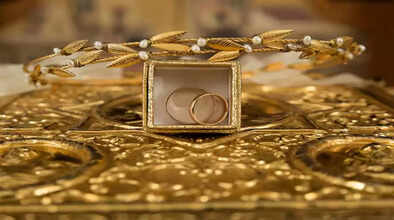Gold Tips: Not only are the making charges on jewelry, but also how these hidden charges rob you of your pocket..

People often buy gold with great joy. Gold isn't just a piece of jewelry, but it's considered a necessary security, prestige, and investment option in Indian homes. While we often find the same design of jewelry available at different prices at two different stores, it's often the case that customers are unable to discern the actual price of the gold and the actual price paid in fees. Therefore, it's crucial to understand the making charges and other associated fees before purchasing gold.
What is a making charge?
When a jeweler melts, cuts, bends, shapes, and engraves gold into jewelry, it takes the artisan's time, effort, and skill. The jeweler incurs various expenses in this process. To compensate for these expenses, a making charge is added to the jewelry price.
In simple terms—
The price of gold is one thing, and the cost of transforming it into jewelry is another. This expense is called the making charge.
In India, the making charge on 22-carat gold jewelry typically ranges from 5% to 25%. The more intricate and laborious the design, the higher the making charge.
How are charges calculated? (Two methods)
Making charges are generally determined in two ways:
1. Per gram
This is a fixed rupee charge for each gram of gold.
Example:
If making charge = ₹500/gram
and jewelry = 10 grams
then making charge = 10 × 500 = ₹5,000
This method is considered simple and transparent.
2. Percentage-Based Method
In this method, a percentage charge is levied on the total value of the gold.
Example:
If the total value of the jewelry = ₹7,00,000
and making charge = 10%
then the additional amount = ₹70,000
So, the percentage method can be expensive, especially when the price of gold is high.
What is a wastage charge?
During the making of jewelry, a small amount of gold is wasted in cutting, finishing, and polishing. The jeweler recovers this loss from the customer in the form of a wastage charge.
Generally, the wastage charge ranges from 5% to 7%. However, if the design is very delicate, intricate, or custom, it can be 10% or more.
More Charges When Purchasing Gold
When purchasing gold, not only the base price but also several other charges are added. These include the base price of the gold, which depends on the market rate per gram. Additionally, there is a making charge, which typically ranges from 5% to 25% per gram. A wastage charge is levied to compensate for the loss of gold during the making of the jewelry, typically ranging from 5% to 10%. Finally, GST, the government tax, is levied at a rate of 3% on the total bill. Therefore, the final price of the jewelry is determined only after all these charges are added.
What are the fees? How much is charged?
The base price of gold is the market rate per gram.
Making charge is the cost of making the jewelry, 5%–25% or per gram.
Wastage charge is the loss of gold during manufacturing, 5%–10%.
GST is the government tax, 3% of the total bill.
Keep these things in mind when buying gold.
Always buy BIS hallmarked gold.
Check the making charge and wastage charge separately on the bill.
Ask the jeweler: Is the making charge fixed or a percentage?
Find out the daily gold rate (Gold Rate Today) first.
Don't rush into a purchase because of a heavy discount.
Clearly, buying gold is a decision involving both emotions and investment. So, if you understand the costs involved, such as making charges, wastage charges, and GST, you will not only purchase jewelry at the right price but also avoid losses when selling gold in the future.
Disclaimer: This content has been sourced and edited from Zee Business. While we have made modifications for clarity and presentation, the original content belongs to its respective authors and website. We do not claim ownership of the content.

